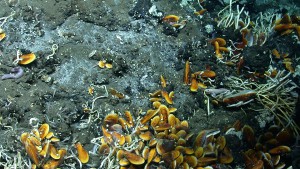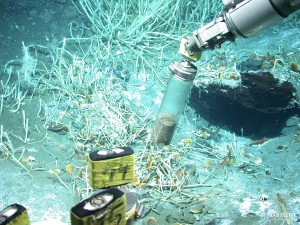The tiny organisms cling to oil droplets and perform a great feat: As a single organism, they may produce methane from oil by a process called alkane disproportionation. Previously this was only known from symbioses between bacteria and archaea. Scientists from the Max Planck Institute for Marine Microbiology and MARUM have now found cells of this microbe called Methanoliparia in oil reservoirs worldwide.

Crude oil and gas naturally escape from the seabed in many places known as “seeps”. There, these hydrocarbons move up from source rocks through fractures and sediments towards the surface, where they leak out of the ground and sustain a diversity of densely populated habitats in the dark ocean. A large part of the hydrocarbons, primarily alkanes, is already degraded before it reaches the sediment surface. Even deep down in the sediment, where no oxygen exists, it provides an important energy source for subsurface microorganisms, amongst them some of the so-called archaea.

Now a study led by scientists from the Max Planck Institute for Marine Microbiology in Bremen, Germany, and MARUM – Center for Marine Environmental Sciences, provides environmental information, genomes and first images of a microbe that has the potential to transform long-chain hydrocarbons to methane. Their results are published in the journal
Source
MARUM, press release, 2019-08-20.
Supplier
Alfred-Wegener-Institut Helmholtz-Zentrum für Polar- und Meeresforschung, Bremerhaven
MARUM – Zentrum für Marine Umweltwissenschaften
Max-Planck-Institut für Marine Mikrobiologie
Universität Bremen
Wageningen University
Share
Renewable Carbon News – Daily Newsletter
Subscribe to our daily email newsletter – the world's leading newsletter on renewable materials and chemicals










